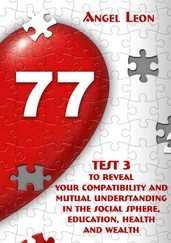II What Exactly Do You Want to Know?
EVEN BEFORE OUR remote ancestors were in contact with the extinct people whom we now call ‘Neanderthals’, people of one kind, or in one group, or from one territory, have been curious about the behaviour of people other than themselves. Much of the curiosity is about their acquired behaviour: why do they wear such funny hats? how can they bear to eat that meat raw? what on earth are those pictures they’re painting all about? But questions about their imposed behaviour will occur no less readily to trained and untrained observers alike: how do they choose their leaders? what is the distribution of property among them? what are they either required or forbidden to do by the incumbents of roles with the power to see to it that they do?
Herodotus, the so-called ‘father of history’, can at least as plausibly be called the father of sociology. His famous book, written in the mid-fifth century BC, is primarily concerned to narrate the victory of the mainland Greeks over the invading Persians. But it is also a rich and fascinating repository of observations about other peoples, obtained by extensive travel and systematic analysis of oral traditions, eyewitness accounts and physical records. Although he does appear to have believed some things which he shouldn’t, such as that the walls of Babylon were 200 ‘royal cubits’ (300 feet!) high, it’s remarkable how often his account has been subsequently confirmed – in the most spectacular instance, by archaeological evidence about Scythian burial customs discovered less than half a century ago. What’s more, he articulates precisely the two fundamental aspects of all sociological enquiry: the recognition that every society is different from every other, but that all are at the same time variants of a universal human nature. Although, as Herodotus explicitly remarks, the members of all societies are inclined to take their own as the paradigm, none are any more entitled to do so than any others, however strongly they believe, now as then, that they are. 1
It follows from Herodotus’s approach that there are two different but equally valid responses which the members of one society will have to what they find out about another: ‘how unlike us they are!’ – yes, but at the same time: ‘how recognizable!’ Admittedly, all such comparisons have to start from somewhere – in the case of Herodotus, from the viewpoint of a Greek looking at non-Greeks – and different observers will always be interested in, and surprised by, different things. Thus: ‘They not only kill their prisoners of war but eat them!’, or ‘ Black people are treated differently from white people over there!’, or ‘The state owns all the factories as well as the land!’, or ‘Would you believe it – in ancient Mesopotamia a nun could be a businesswoman, and in Anglo-Saxon England a priest could be a slave !’ But equally: ‘They admire successful athletes just like we do!’, or ‘Look how those late Roman bureaucrats behaved – no differently from ours!’ 2
Whatever the contrast being drawn between ‘our’ roles and ‘theirs’, sociologists owe it both to their readers and to themselves to get their basic observations right. This isn’t always as easy as it may seem. For a start, there is the language problem: if an English-speaking sociologist asks a French-speaking informant about the role of the informant’s boss, the English-speaking sociologist must beware of equating ‘ patron ’, which is what English speakers mean by ‘boss’, with ‘patron’, which isn’t. But even when both the sociologist and the native informant understand correctly what the other is saying, the sociologist may be misled by having failed to ask the right question. When Captain R. S. Rattray, a British colonial officer who had spent many years among the Ashanti of what was then, in the 1910s and ’20s, called the Gold Coast, asked his native informants why he had never been told that the Queen Mother used to outrank the King, they replied: ‘The white man never asked us this; you have dealings with and recognize only the men; we supposed the Europeans considered women of no account and we know you do not recognize them as we have always done.’ 3
This sort of experience is disconcerting enough. But even if the sociologist has asked all the right questions, the questions may not have been asked of the right people. Or the right people may, for reasons of their own, have given the wrong answers. A classic example is the account of female adolescence in Samoa by the American anthropologist Margaret Mead. Her account, which was uncritically accepted by an enormous readership for several decades after its publication in 1928, depicted a guilt-free world of permissive sexuality. But Mead had no detailed knowledge of Samoan society and language, she didn’t check what she was told by her 25 young informants against either direct observations of her own or alternative accounts by other, adult Samoans, and it never seems to have occurred to her that she might be being deliberately misled. It is, accordingly, no surprise that she should turn out to have got it quite badly wrong. The surprise is that it took so long for her mistakes to be diagnosed by other observers. 4 But there are many other instances where researchers whose intellectual honesty (as opposed to their judgement) is not in doubt have applied themselves to explaining something which was never there to be explained – for example, explaining the emergence of ‘nuclear’ households of parents and children by contrast with a purely presumptive ‘extended family’ pattern attributed to the pre-industrial past, or explaining ‘new’ working-class lifestyles by contrast with a purely presumptive ‘proletarian’ culture attributed to nineteenth-century industrialization. Or take Captain Archibald Blair, who reported on the basis of an exploration carried out in 1789 that chiefs in the Andaman Islands were ‘generally painted red’. Nice try, Captain. But as the British anthropologist A. R. Radcliffe-Brown discovered a little over a century later, the Andaman Islanders don’t have any chiefs. 5
The difficult cases can be very difficult indeed. A notoriously intriguing one is the reception of yet another Captain (Cook this time) by the Hawaiian Islanders when he arrived there on board HMS Resolution in 1778. Did they or didn’t they regard him as a god? The American anthropologist Marshall Sahlins is sure that they did, given that Cook’s appearance was entirely consistent with their beliefs and expectations and that they had no previous direct acquaintance with Europeans. But the Sri Lankan anthropologist Gananath Obeyesekere is sure that they didn’t; what they did (or so Obeyesekere believes) is deify him for their own political purposes after he had been killed in a scuffle which broke out during his third and unexpected visit. It’s a particularly difficult case for two reasons. First, the evidence, both historical and anthropological, is ambiguous and incomplete. But second, the question is such as to stir up just the kind of accusations of intellectual bad faith as in fact it has. For Obeyesekere, Sahlins is imposing on the natives of eighteenth-century Hawaii a white imperialist myth about their propensity to see visiting Europeans as gods. For Sahlins, Obeyesekere is imposing on them a myth of universal (but really only bourgeois European) rationalism which denies them their own coherent and distinctive culture. So far, at least, Sahlins seems to have had the better of the argument. 6 But that’s not the point. The point is that if we could go back in time, check out the evidence as it has come down to us, interview the people involved, and observe how they actually behaved, we’d know for sure. The conclusion to be drawn isn’t that arguments of this sort are difficult to settle conclusively (they are), or that they can be used to fight ideological battles of the here and now (they can), or that they touch on deep philosophical issues about the nature of religious belief (they do). It’s that for all that, they are amenable in principle to empirical research.
Читать дальше




![О Генри - Социальный треугольник [The Social Triangle]](/books/405340/o-genri-socialnyj-treugolnik-the-social-triangl-thumb.webp)







